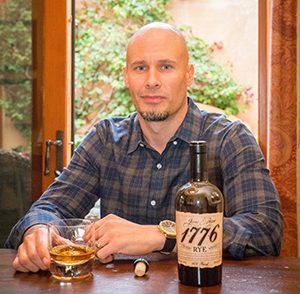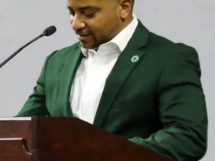
LEXINGTON, Ky. — What is your title? That is a question often posed to Amir Peay, owner of the historic James E. Pepper distillery. He sometimes opts for the title “whiskey entrepreneur” as a general summary of all that he has accomplished in the last decade, but there certainly is more to the story.
Peay graduated from the University of California Santa Barbara with a degree in philosophy. Unable to find work as a philosopher, he then decided to put his degree to good use behind the bar. Starting out as a bar-back in Washington D.C. he worked his way up to bartender where his love for the industry and whiskey, in particular, began to take shape as he spent the next six years making drinks.
“After I began drinking and appreciating good whiskey. I was introduced to bourbon at a bar in Glover Park in D.C. named bourbon,” noted Peay. “It was created and owned by Bill Thomas, the founder of Jack Rose in D.C. that today has arguably the best collection of whiskey in the United States. Whiskey grew on me very quickly.”
Fate took an interesting turn when Peay, an American history buff, would stumble on the defunct James E. Pepper whiskey label while reading about a historic boxing match that took place in 1910 between Jack Johnson and Jim Jeffries. This bout was sponsored by James E. Pepper Whiskey. Thus began a more than decade-long obsession that continues to this day.
Peay began forming valuable partnerships with reputable distilleries producing top-quality whiskey to relaunch the Pepper brand and began building the 1776 line of whiskies. As the award-winning brand grew in popularity, Peay wanted more control over the production of his whiskey and to ultimately build a Pepper distillery in Kentucky. Enter the historic James E. Pepper distillery in Lexington, KY, which had been sitting vacant for nearly 60 years. This venture was not without its obstacles.
“I didn’t have much money and I didn’t have any connections in the Kentucky whiskey business,” lamented Peay. “Acquiring the brand was easy–nobody cared about it. But by bringing together all the pieces of the story over the course of a decade of historical research helped to show people why it was worth resurrecting the distillery as well as the whiskies. I was able to build an independent whiskey business one barrel at a time through the 1776 label and partnerships with other distilleries. My timing was also good in that I made a big bet on Rye whiskey before the category took off and I also positioned 1776 Rye at 100-proof perfect for cocktails, and so it was a hit with bartenders to use in classic cocktails. I was successful enough to leverage that business into staying independent and rebuilding the old distillery. The stars really aligned.”
The James E. Pepper Distillery has been back making whiskey since 2017 and is part of the vibrant Distillery District in downtown Lexington. Peay is very proud of his accomplishments and the fact they have been made on his own terms. He continues his insatiable quest to learn more about the Peppers and honor their tradition. While heritage is always top of mind, Peay doesn’t shy away from trying new things—as that was also part of the Pepper legacy.
“It is always an interesting line to walk. We have a ton of historical materials to work with, including exact grain bills, vintage whiskey to sample and detailed records on production methods. But truth be told, people are making the best whiskey today that they ever have in history,” said Peay. “There are more resources, applicable information, science and technology than ever before available to distillers, and when coupled with the wisdom and experience of the prior generations it really gives us this amazing potential and opportunity. Our approach is to honor the tradition, but also not be limited by it. Our primary goal is to make high grade, flavorful whiskey, and everything comes after that.”




















Add Comment